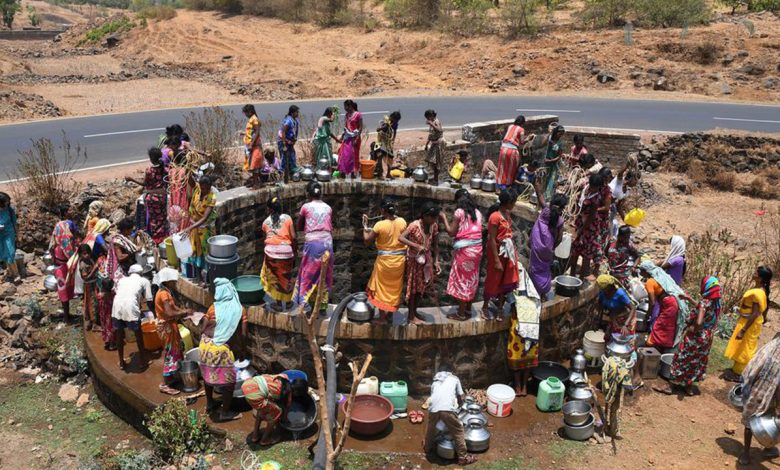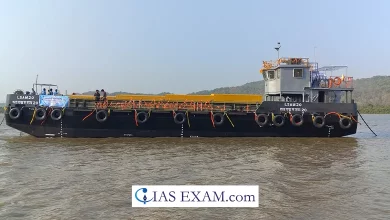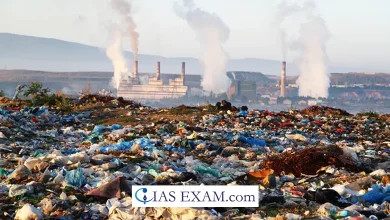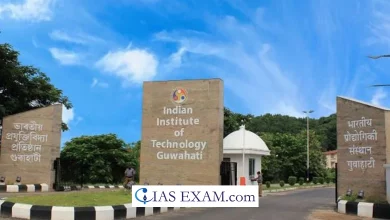Daily Current Affairs for UPSC
Concerns over Freshwater Shortages
Syllabus- Environment and Ecology [GS Paper-3]

Context- A recent global study conducted by Circle of Blue and the World Wide Fund for Nature (WWF) surveyed nearly 30,000 individuals from 31 nations to examine attitudes toward freshwater shortages.
Key Highlights
- Concerns about water scarcity have risen significantly in Argentina, South Korea, Vietnam, Colombia, Germany, and Peru over the past few years.
- Freshwater scarcity is said to have a significant impact on 30% of the population.
- In the 17 countries that are consistently monitored, grave concerns about freshwater shortages have increased from 49% in 2014 to 61% in 2022.
- Individuals in metropolitan regions (32%) are bound to be enormously impacted by an absence of freshwater than those in country (28%) or towns and rural regions (26%).
- 38% of respondents stated that climate change has had a “great” personal impact on them.
- Drought was viewed as the most concerning effect of climate change by those who claimed to have been personally affected.
What is the current state of India’s freshwater shortage?
- About:
-
-
- The shortage of freshwater in India persists. India has only 4% of the world’s freshwater resources, despite having 16% of the world’s population.
- NITI Aayog says that many Indians suffer from high to extreme water stress.
- By 2060, there will be a severe and irreversible shortage of fresh water in North India, the most populous region of the country, as the availability of the essential resource will decrease due to climate change.
-
- Issues:
-
- Water pollution is rising: Domestic, industrial, and mining waste are all frequently dumped into water bodies, where they can spread diseases.
- Additionally, eutrophication, which can have a significant effect on aquatic ecosystems, can result from water pollution.
- Excessive Use of Groundwater: According to the Central Ground Water Board, 256 of the 700 districts in India have reported critical or overexploited groundwater levels.
- Groundwater resources are becoming increasingly scarce as a result of excessive reliance and unsustainable consumption, leading to the drying up of wells, ponds, and tanks. This has heightened the water emergency.
- Conflict between the City and the Rural: As a result of rapid urbanization, cities are expanding rapidly.
- Additionally, a large influx of migrants from rural areas has increased the amount of water used per person in cities, necessitating the transfer of water from rural reservoirs to urban areas to make up the shortfall.
- Due to the decreasing level of water in urban areas, it is likely that in the future, cities will heavily rely on rural areas for raw water supply, which may stoke conflict between rural and urban areas.
- Water pollution is rising: Domestic, industrial, and mining waste are all frequently dumped into water bodies, where they can spread diseases.
Way Forward
- Sustainable Groundwater Management: There is a need to devise a legitimate instrument and country metropolitan incorporated projects for fake re-energize to groundwater and water gathering at family level, conjunctive utilization of surface water and groundwater, and guideline of water supplies.
- Zone for conserving water: There is a need to move the center towards proficient water administration and expanded information discipline in regards to the situation with water bodies at territorial, state and public level, and setting up water protection zones.
- Utilizing Current Methods of Water Management: Water-related data systems can be linked to information technology. In addition, recent technological and research advancements have enabled the purification and safety of previously unfit-for-drinking water.





.png)



